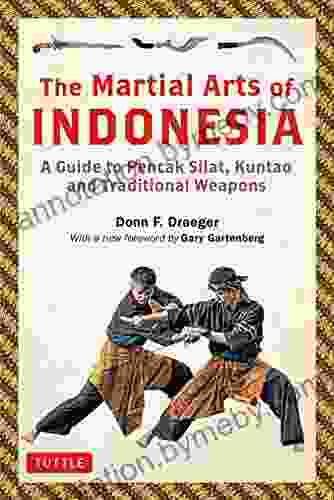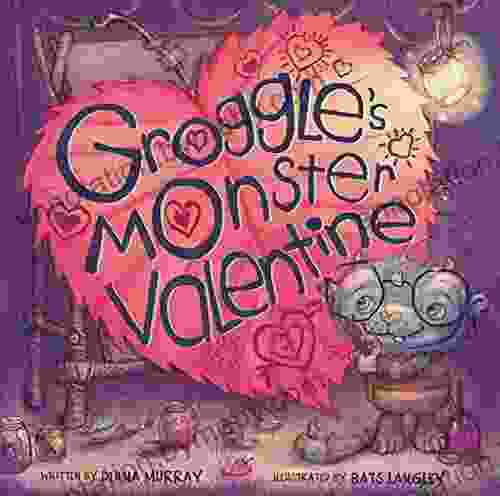Understanding The Mystery Of The Embrace Part.

4.1 out of 5
| Language | : | English |
| File size | : | 10359 KB |
| Text-to-Speech | : | Enabled |
| Screen Reader | : | Supported |
| Enhanced typesetting | : | Enabled |
| Word Wise | : | Enabled |
| Print length | : | 126 pages |
| Lending | : | Enabled |
The Embrace: A Universal Symbol of Connection
The embrace is a universal symbol of connection, comfort, and safety. It is a gesture that transcends cultures and languages, conveying a deep sense of intimacy and belonging. When we embrace someone, we are not only physically close to them, but we are also opening ourselves up to them emotionally. We are sharing our vulnerability and trusting them with our hearts.
The embrace can be a powerful healing force. It can help to soothe pain, reduce stress, and promote relaxation. It can also help to build trust and intimacy between people. When we embrace someone, we are sending them the message that we care about them and that we are there for them.
The Embrace in Different Cultures
The embrace is a common gesture in many cultures around the world. In some cultures, it is considered to be a sign of respect and affection. In other cultures, it is seen as a way to show intimacy and love.
In Western culture, the embrace is typically used as a greeting between friends and family members. It can also be used to express sympathy or congratulations. In some cultures, such as Latin America, the embrace is a common way to greet strangers.
In Eastern cultures, the embrace is often used to show respect and affection for elders. It can also be used to express gratitude or apology. In some Asian cultures, such as China, the embrace is not as common as it is in Western cultures. However, it is still used to express close relationships between family members and friends.
The Embrace as a Spiritual Symbol
The embrace is also a powerful spiritual symbol. It represents the union of two souls, the merging of the physical and spiritual worlds, and the connection between heaven and earth.
In many religions, the embrace is used as a symbol of God's love for humanity. In Christianity, for example, the embrace is often used to represent the love of Jesus Christ for his followers. In Hinduism, the embrace is seen as a symbol of the union of the individual soul with the divine.
The embrace can also be a symbol of our own inner journey. It can represent the coming together of our different aspects, the integration of our shadow and light, and the achievement of wholeness.
The Embrace as a Healing Tool
The embrace can be a powerful healing tool. It can help to soothe pain, reduce stress, and promote relaxation. It can also help to build trust and intimacy between people.
When we embrace someone, we are sending them the message that we care about them and that we are there for them. This can be a very healing message for someone who is feeling lonely, isolated, or in pain.
The embrace can also help to heal our own wounds. When we embrace ourselves, we are sending ourselves the message that we love and accept ourselves. This can be a very powerful message for someone who has been struggling with low self-esteem or self-doubt.
The Embrace as a Transformative Force
The embrace can be a transformative force in our lives. It can help us to grow and change in positive ways. It can help us to become more loving, compassionate, and open-hearted.
When we embrace someone, we are opening ourselves up to them. We are allowing them to see our vulnerabilities and our strengths. This can be a very scary thing, but it can also be very liberating. When we are open to others, we are more likely to experience love, connection, and intimacy.
The embrace can also help us to embrace ourselves. When we embrace ourselves, we are accepting all of our different aspects, both the light and the dark. This can be a very difficult thing to do, but it is essential for personal growth and transformation.
When we embrace ourselves, we are
4.1 out of 5
| Language | : | English |
| File size | : | 10359 KB |
| Text-to-Speech | : | Enabled |
| Screen Reader | : | Supported |
| Enhanced typesetting | : | Enabled |
| Word Wise | : | Enabled |
| Print length | : | 126 pages |
| Lending | : | Enabled |
Do you want to contribute by writing guest posts on this blog?
Please contact us and send us a resume of previous articles that you have written.
 Book
Book Novel
Novel Page
Page Chapter
Chapter Text
Text Story
Story Genre
Genre Reader
Reader Library
Library Paperback
Paperback E-book
E-book Magazine
Magazine Newspaper
Newspaper Paragraph
Paragraph Sentence
Sentence Bookmark
Bookmark Shelf
Shelf Glossary
Glossary Bibliography
Bibliography Foreword
Foreword Preface
Preface Synopsis
Synopsis Annotation
Annotation Footnote
Footnote Manuscript
Manuscript Scroll
Scroll Codex
Codex Tome
Tome Bestseller
Bestseller Classics
Classics Library card
Library card Narrative
Narrative Biography
Biography Autobiography
Autobiography Memoir
Memoir Reference
Reference Encyclopedia
Encyclopedia Tim M Berra
Tim M Berra Larry Krohn
Larry Krohn Dita Kraus
Dita Kraus Derek S Reveron
Derek S Reveron Deedee Cummings
Deedee Cummings Don Williams
Don Williams Keith Elliot Greenberg
Keith Elliot Greenberg Dikla Levy Frances
Dikla Levy Frances Devon Franklin
Devon Franklin Sara Bennett
Sara Bennett Peter Moore
Peter Moore Devyn Stone
Devyn Stone Denys Johnson Davies
Denys Johnson Davies Jacobus Kotze
Jacobus Kotze Harold Evensky
Harold Evensky Michael S Gazzaniga
Michael S Gazzaniga Dennis Duncan
Dennis Duncan Debra Satz
Debra Satz Denise Linn
Denise Linn Michelle Le Blanc
Michelle Le Blanc
Light bulbAdvertise smarter! Our strategic ad space ensures maximum exposure. Reserve your spot today!
 Kenneth ParkerFollow ·19.5k
Kenneth ParkerFollow ·19.5k Carter HayesFollow ·12.9k
Carter HayesFollow ·12.9k George MartinFollow ·14.6k
George MartinFollow ·14.6k Duane KellyFollow ·19k
Duane KellyFollow ·19k Ronald SimmonsFollow ·18.7k
Ronald SimmonsFollow ·18.7k Tennessee WilliamsFollow ·2.7k
Tennessee WilliamsFollow ·2.7k Raymond ParkerFollow ·13.4k
Raymond ParkerFollow ·13.4k Cason CoxFollow ·9.3k
Cason CoxFollow ·9.3k

 Cruz Simmons
Cruz SimmonsGuide To Pencak Silat Kuntao And Traditional Weapons:...
Immerse yourself in the captivating world of...

 Dalton Foster
Dalton FosterUnlock Your Financial Freedom: Dive into the ABCs of Real...
Are you ready to embark on a...

 George Orwell
George OrwellThe Advanced Guide to Real Estate Investing: Your...
Are you ready to embark on...

 Will Ward
Will WardMargaret Laurence: The Making of a Writer
Margaret Laurence (1926-1987) was one of...

 Jorge Amado
Jorge AmadoThe ABCs of Property Management: A Comprehensive Guide...
Owning and managing rental...
4.1 out of 5
| Language | : | English |
| File size | : | 10359 KB |
| Text-to-Speech | : | Enabled |
| Screen Reader | : | Supported |
| Enhanced typesetting | : | Enabled |
| Word Wise | : | Enabled |
| Print length | : | 126 pages |
| Lending | : | Enabled |














